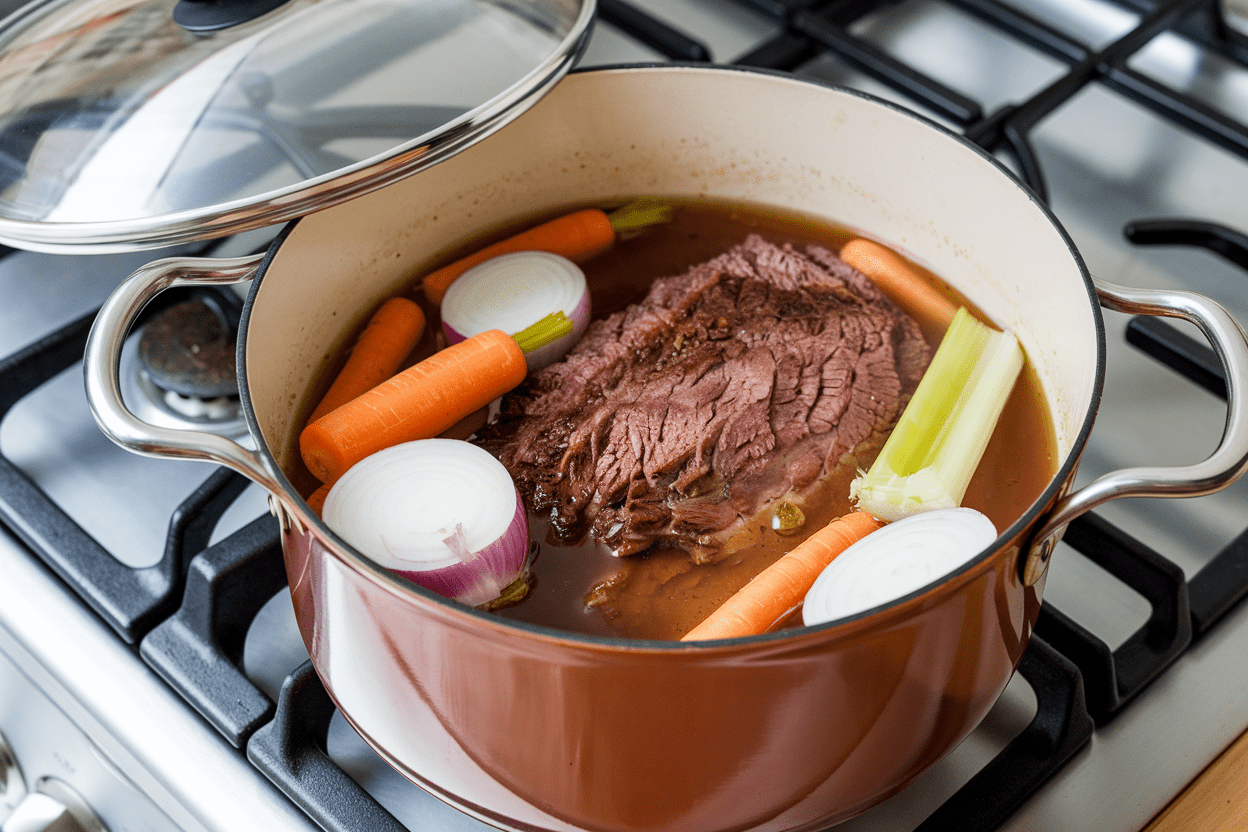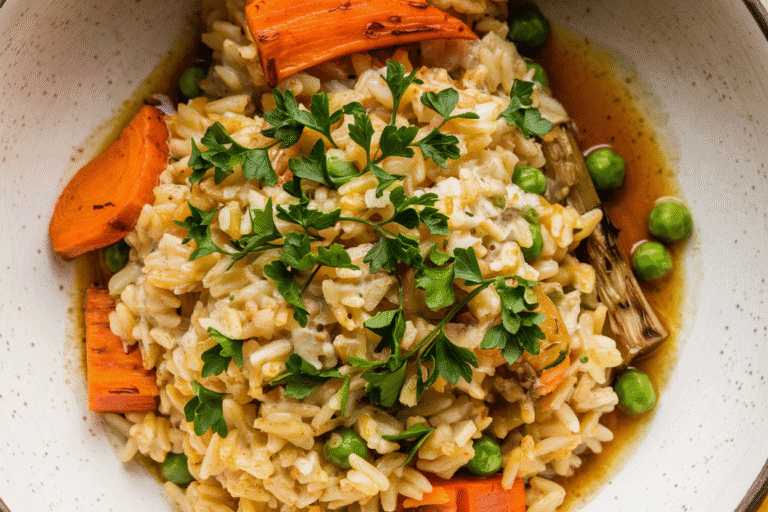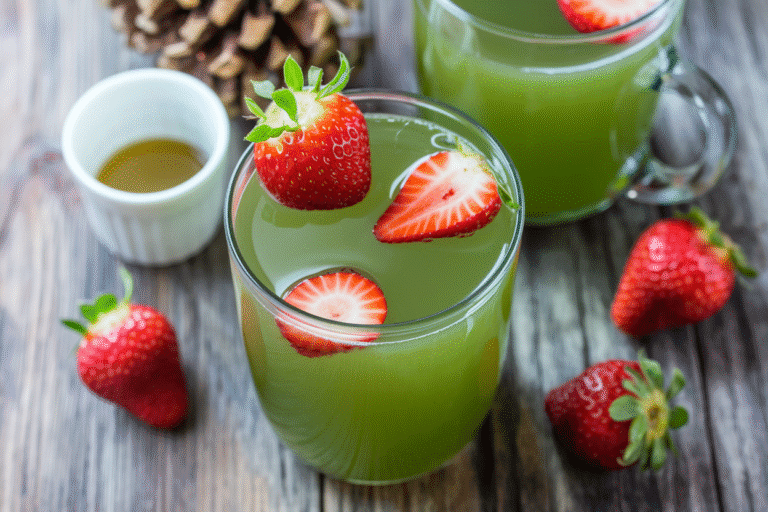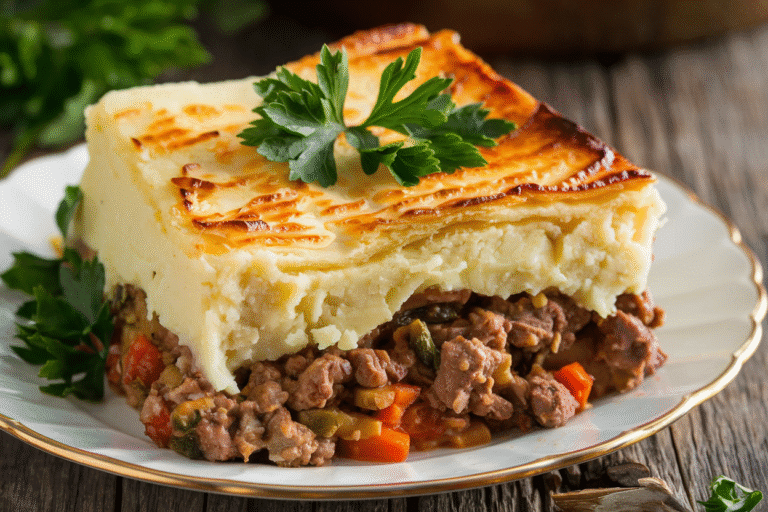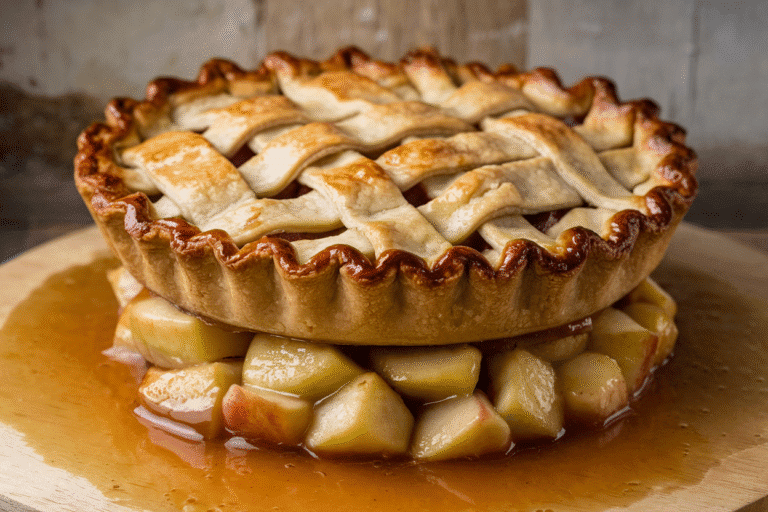Stop Serving Dry Roast: This “Au Jus Recipe Easy” Hack Turns Dinner Into a Steakhouse Experience
You spent hours on that roast… and then served it with sadness. Been there. The fix isn’t another complicated sauce—it’s a rich, glossy au jus that takes 15 minutes and zero culinary wizardry.
This “au jus recipe easy” tastes like you bribed a French chef, but it’s really just smart layering and serious flavor extraction. It’s the kind of upgrade that makes leftovers vanish and guests ask for the “secret recipe.” Ready to make your roast taste expensive?
The Secret Behind This Recipe
Authentic-tasting au jus isn’t about cornstarch or heavy cream. It’s about extracting flavor from fond (those browned bits), balancing salt with acidity, and amplifying savoriness with umami boosters.
The magic trifecta here is pan drippings, a quick deglaze, and a short simmer to concentrate. We lean on a splash of dry wine for brightness, a touch of soy or Worcestershire for meaty depth, and beef stock for body. No flour-thickened gravy—this stays thin, glossy, and spoonable.
The result? A restaurant-level sauce that hugs your roast without masking it.
Ingredients
- Pan drippings from roast beef (or 1 tablespoon butter if you don’t have drippings)
- 1 small shallot, finely minced (or 1/4 small onion)
- 2 cloves garlic, smashed
- 1 cup beef stock or broth (preferably low-sodium)
- 1/2 cup dry red wine (optional but recommended; sub more stock if not using)
- 1 teaspoon Worcestershire sauce
- 1/2 teaspoon soy sauce (optional, for umami and salt balance)
- 1 fresh thyme sprig or 1/4 teaspoon dried thyme
- 1 bay leaf
- Freshly cracked black pepper, to taste
- Salt, to taste (start light and adjust at the end)
- 1 teaspoon unsalted butter (optional, to finish and add sheen)
Cooking Instructions
- Collect the drippings. After roasting beef, pour off excess fat from the pan, leaving about 1 tablespoon plus the browned bits. If you didn’t roast, melt 1 tablespoon butter in a skillet over medium heat.
- Sweat the aromatics. Add the minced shallot and smashed garlic.
Cook 2–3 minutes until softened and lightly golden, stirring so nothing burns. This builds the base.
- Deglaze with wine. Pour in the red wine (or extra stock). Scrape up the fond with a wooden spoon.
Let it simmer 2–3 minutes to reduce by about half—this removes harsh alcohol and concentrates flavor.
- Add stock and umami. Stir in the beef stock, Worcestershire, soy (if using), thyme, and bay leaf. Bring to a lively simmer.
- Reduce. Simmer 6–10 minutes, uncovered, until the liquid reduces by roughly a third and tastes rich. You’re aiming for a thin, flavorful jus, not gravy.
- Strain. Remove thyme and bay leaf.
Strain through a fine mesh sieve into a small saucepan or bowl for a smooth finish.
- Finish and season. Off the heat, swirl in 1 teaspoon butter for gloss (optional). Taste and adjust salt and pepper. If it’s too salty, add a splash of water or more stock; if flat, a few drops of Worcestershire or a squeeze of lemon can brighten.
- Serve hot. Ladle over sliced roast beef, French dip sandwiches, or prime rib.
Expect applause.
How to Store
- Refrigerator: Cool completely, then store in an airtight container up to 4 days. Fat will rise and solidify; skim before reheating for a cleaner flavor.
- Freezer: Freeze in small portions (ice cube tray = portion control) for up to 3 months. Pop out cubes as needed for weeknight magic.
- Reheating: Warm gently on the stove over low heat until steaming.
Avoid boiling to preserve fresh flavors. If it thickens, loosen with a splash of stock.
Health Benefits
- Protein support: Made with beef stock, au jus offers trace proteins and collagen-derived amino acids that can support joint and skin health. It’s not a protein shake, but every bit counts.
- Lower fat than gravy: Because it’s not flour-thickened or cream-based, au jus is typically lighter in calories and fat than traditional gravy.
- Hydration and electrolytes: Warm, savory liquids help hydration and provide sodium and minerals—handy after a big workout or, you know, life.
- Customizable sodium: Using low-sodium stock and controlling added salt lets you tailor it to your needs.
FYI, store-bought packets often have more sodium and additives.
Avoid These Mistakes
- Skipping the fond. Those browned bits are flavor gold. Don’t wash them away—deglaze them.
- Under-reducing. Thin and watery au jus tastes like beef-flavored water. Reduce until the flavor pops.
- Over-salting early. Reduction concentrates salt.
Season at the end to avoid a saline surprise.
- Using sweet wine. Sweet wines make weird, sticky jus. Use dry red or skip wine entirely.
- Boiling aggressively. Hard boils mute nuance and can turn the sauce bitter. Gentle simmer = best flavor.
Variations You Can Try
- Classic French twist: Add a teaspoon of Dijon and finish with a pat of cold butter.
Silky, elegant, very ooh-la-la.
- Garlic-herb: Add rosemary with the thyme and a pinch of cracked pepper. Great with prime rib.
- Mushroom au jus: Sauté 1/2 cup finely chopped cremini mushrooms with the shallots for earthy depth. Strain or leave them in for texture.
- Balsamic boost: Stir in 1–2 teaspoons balsamic vinegar at the end for a subtle sweet-tangy finish.
- Umami bomb: Add 1/2 teaspoon fish sauce instead of soy.
Sounds wild, tastes incredible, and no, it won’t taste fishy.
- No-alcohol version: Swap wine for extra stock plus 1 teaspoon red wine vinegar for brightness.
- Onion-forward: Use caramelized onions instead of shallots and finish with a splash of sherry vinegar. Sandwich heaven.
Can I make au jus without pan drippings?
Yes. Use 1 tablespoon butter or a mix of butter and a teaspoon of neutral oil to sauté shallots and garlic, then proceed with stock, Worcestershire, and herbs.
It won’t be identical, but it’ll still be rich and satisfying.
What’s the difference between au jus and gravy?
Au jus is a thin, intensely flavored beefy liquid made from drippings and stock, usually without thickeners. Gravy is thicker, often made with a roux or cornstarch slurry, and coats food more heavily.
Which beef stock is best?
Use low-sodium, high-quality stock or broth—homemade if you have it. If using store-bought, look for short ingredient lists and avoid overly “bouillon-y” brands that taste artificial.
Can I make it ahead?
Absolutely.
Make the au jus up to 3 days in advance. Reheat gently and adjust seasoning before serving. If it tastes dull after chilling, a dash of Worcestershire or a squeeze of lemon can wake it up.
Will this work for French dip sandwiches?
Yes, and it’s sensational.
Toast crusty rolls, load with thin-sliced roast beef, melt provolone if you like, and serve with a ramekin of hot au jus for dunking. Peak comfort.
How do I thicken it if I want more body?
If you prefer slightly thicker, whisk in 1/2 teaspoon cornstarch mixed with 1 teaspoon cold water and simmer 30–60 seconds. But remember: classic au jus is meant to be thin and glossy.
Can I use chicken or vegetable stock?
You can, but flavor will differ.
Beef stock creates the signature depth. If substituting, add extra umami (a touch of soy, Worcestershire, or a pinch of mushroom powder) to compensate.
Final Thoughts
This “au jus recipe easy” is the small move that makes a big upgrade—like switching from basic cable to streaming in 2012. Minimal effort, major payoff.
With a handful of pantry staples and a 10-minute simmer, you’ll turn any roast or sandwich into a legit steakhouse moment. Keep some frozen, be the person with the secret sauce, and watch your “just okay” dinners suddenly become legendary. IMO, that’s a pretty great trade.
